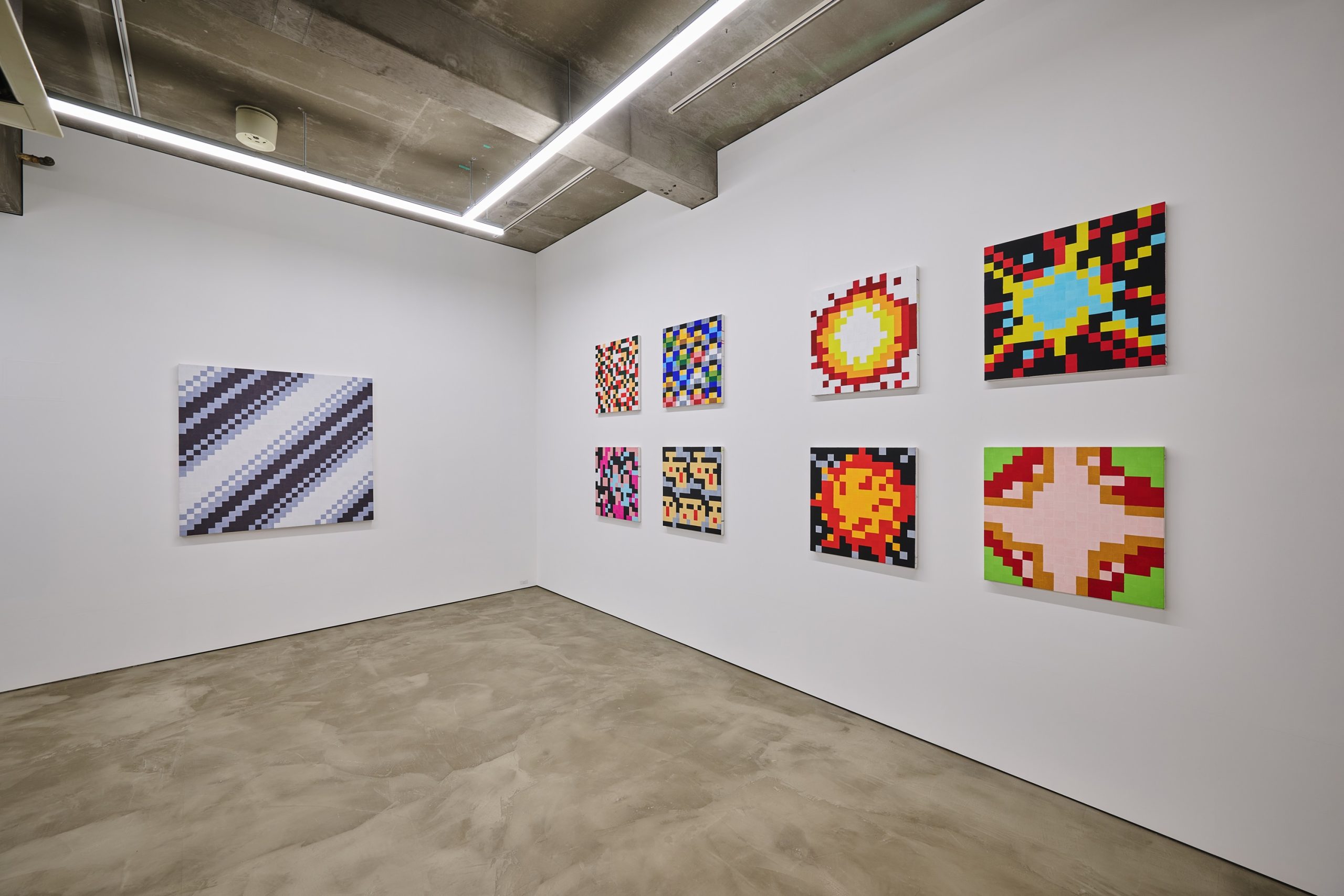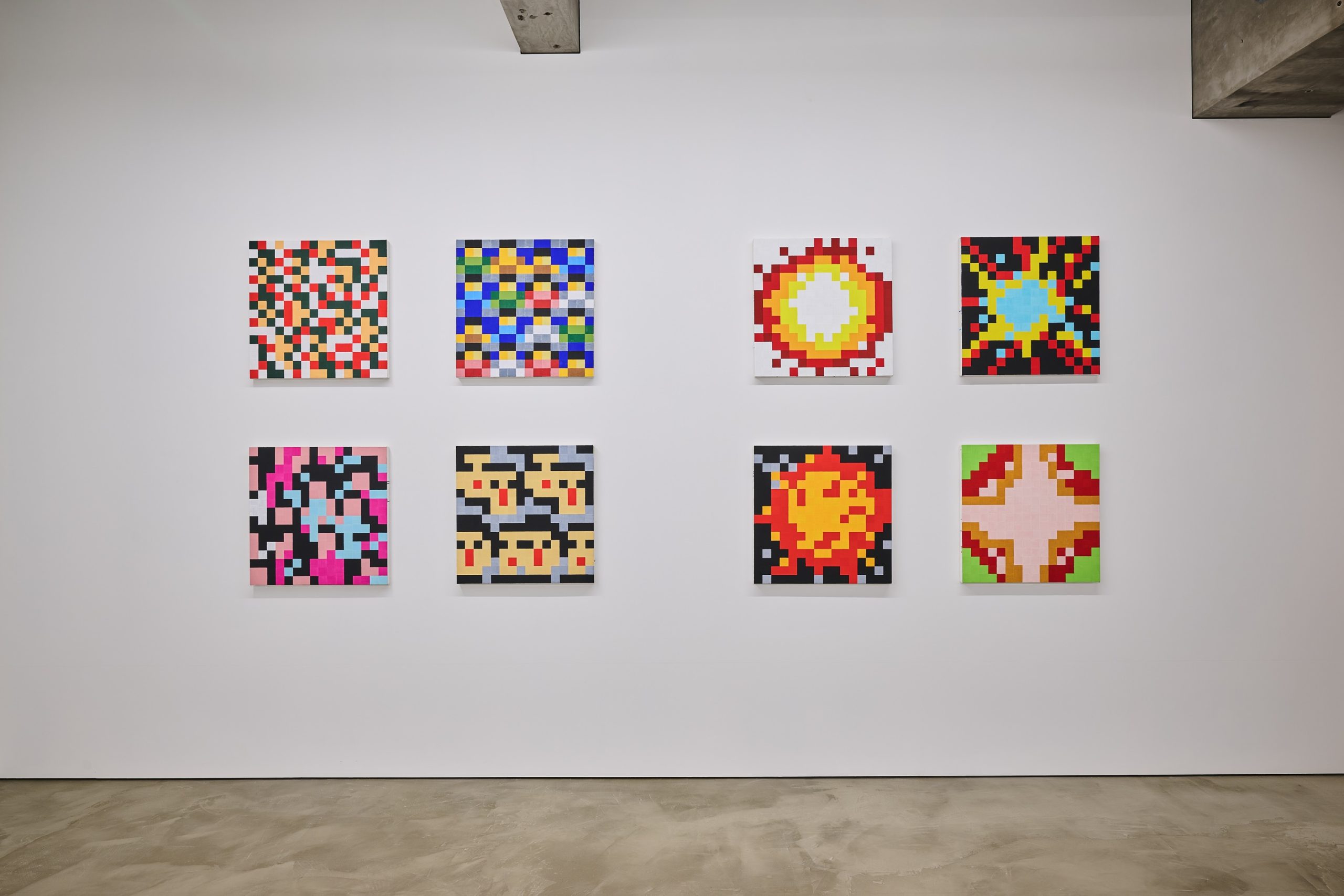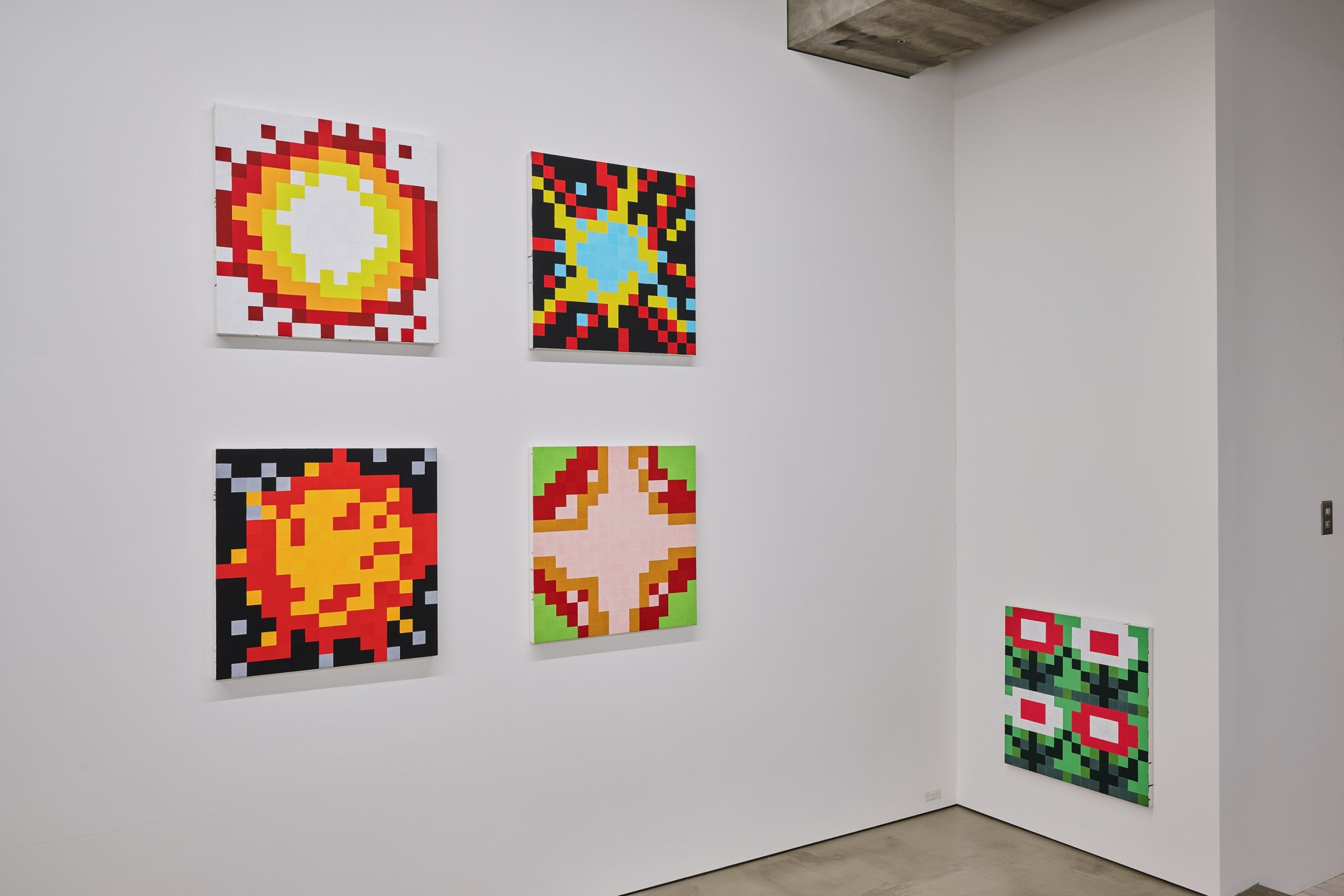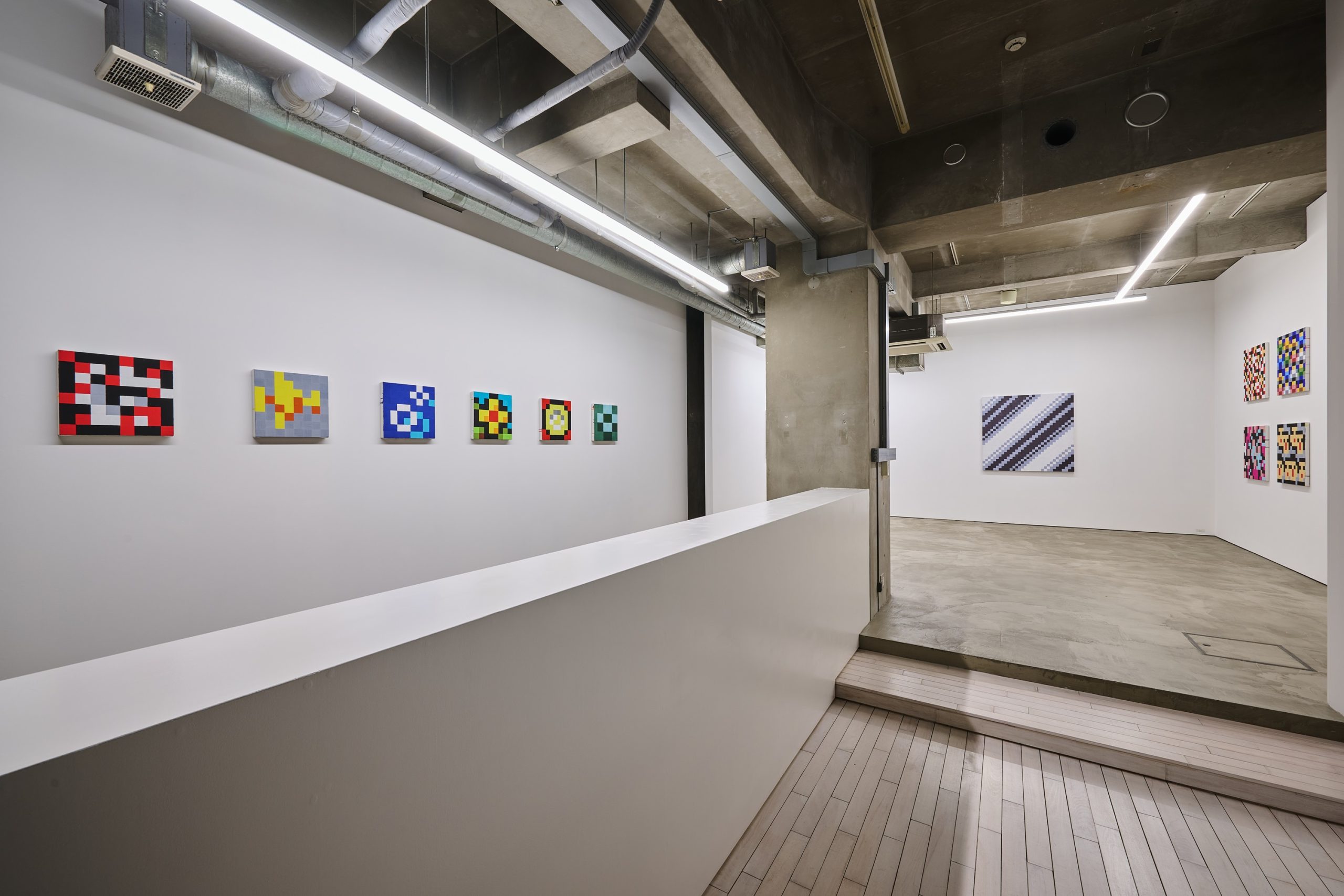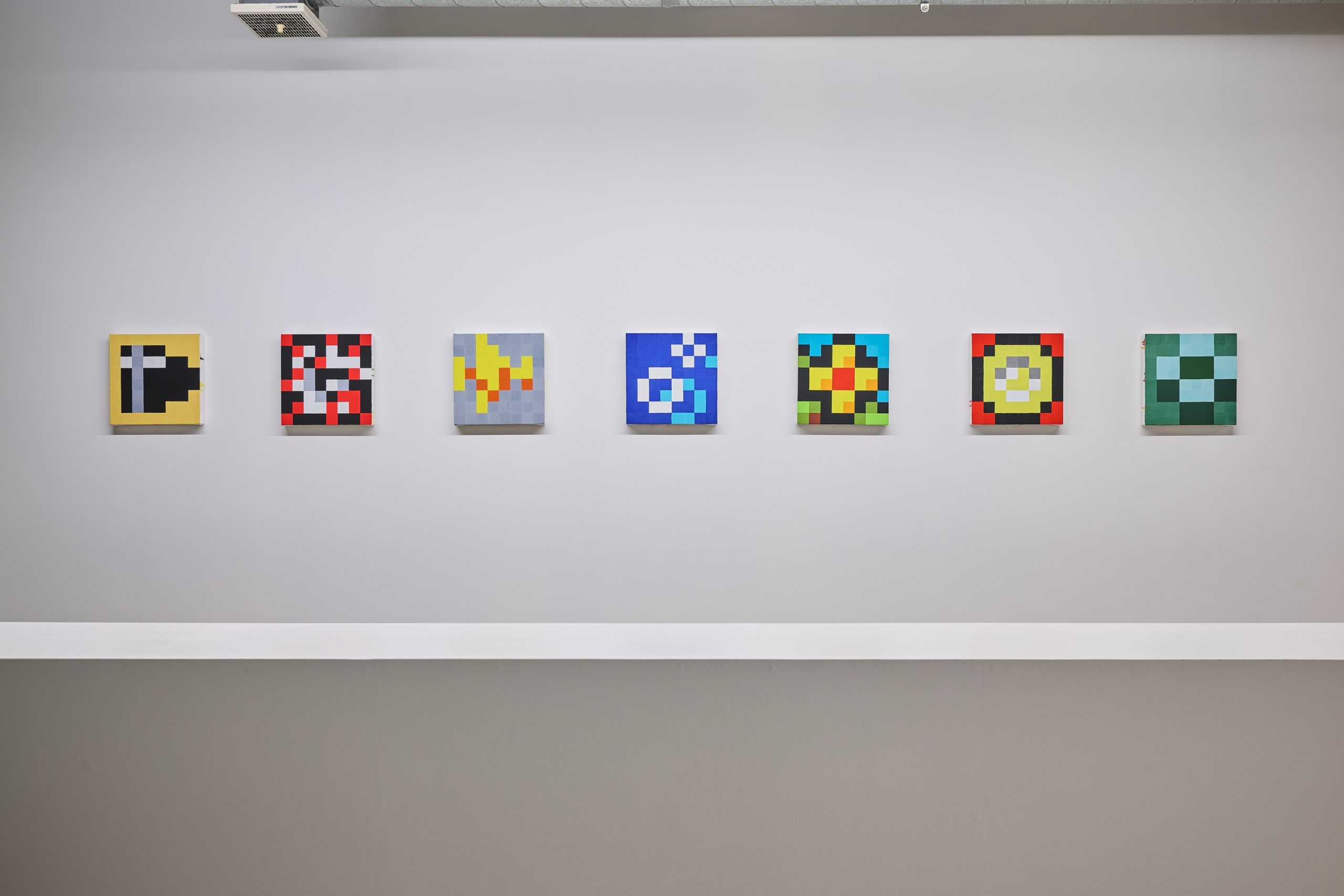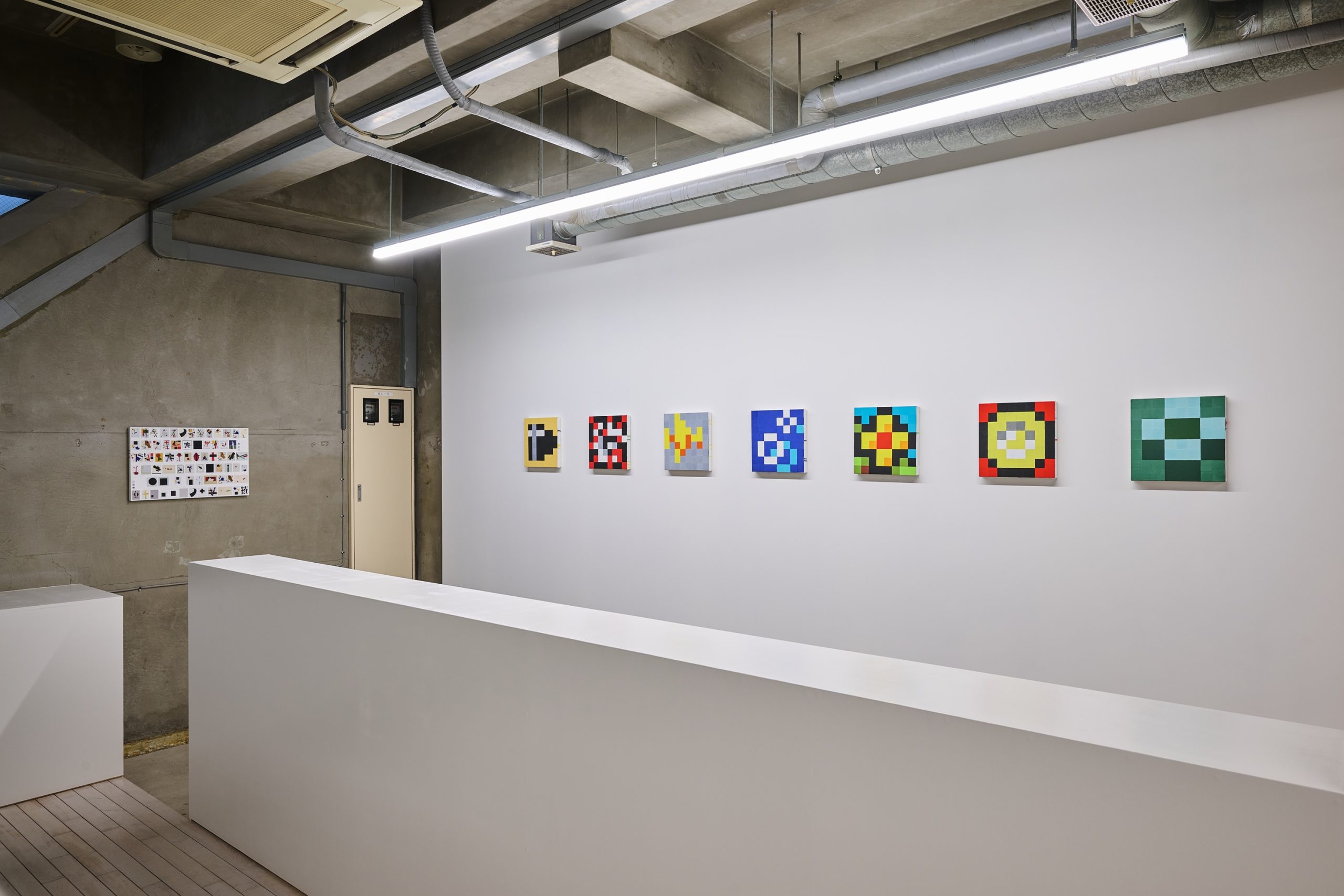Exhibition
Fuminao Suenaga : Light paintings
February 17 - March 17, 2024
Opening reception : Saturday, February 17, 17:00 – 19:00
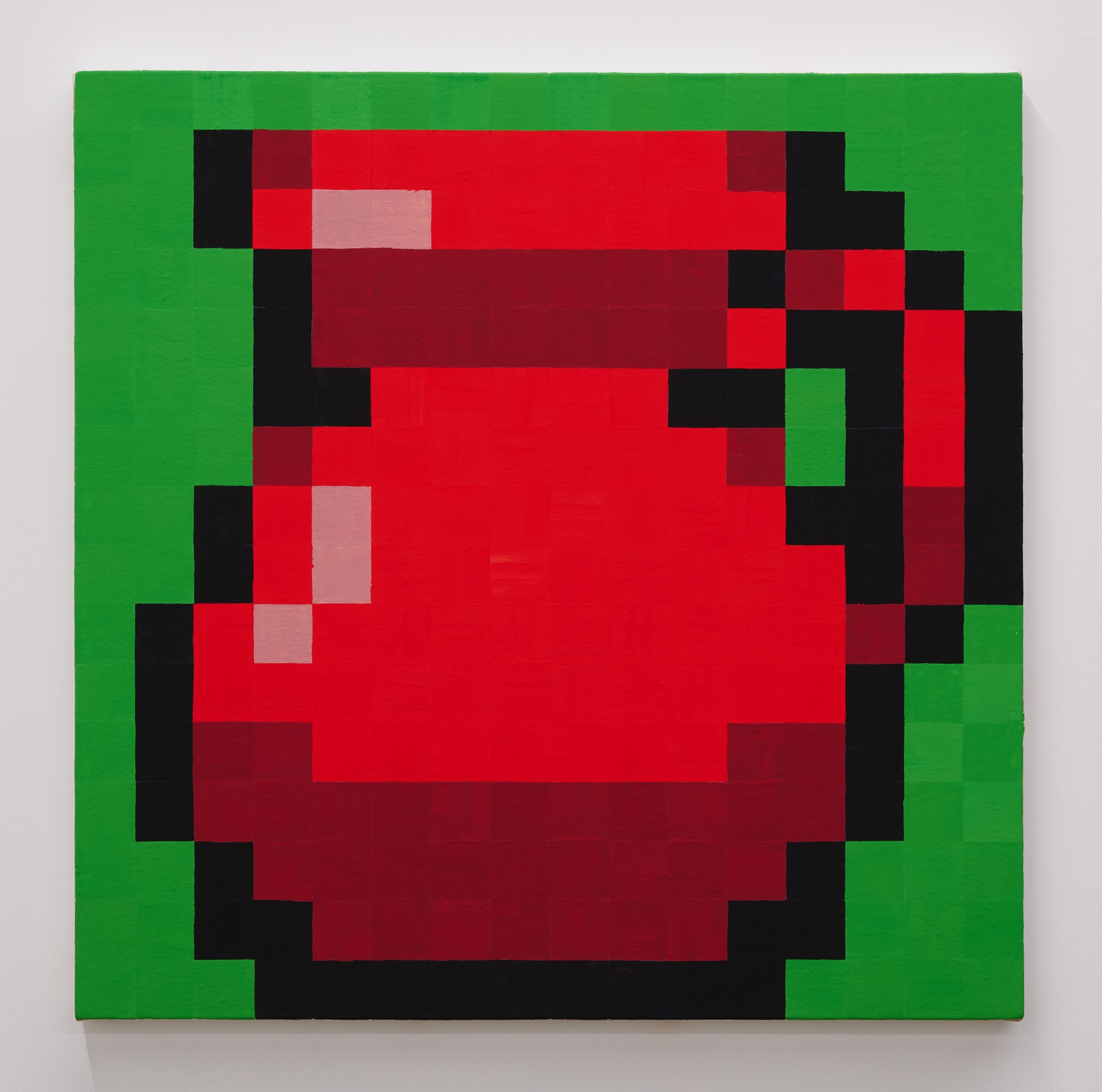
Red vase
2023
Acrylic, pigment on cotton, panel
60 x 60 cm
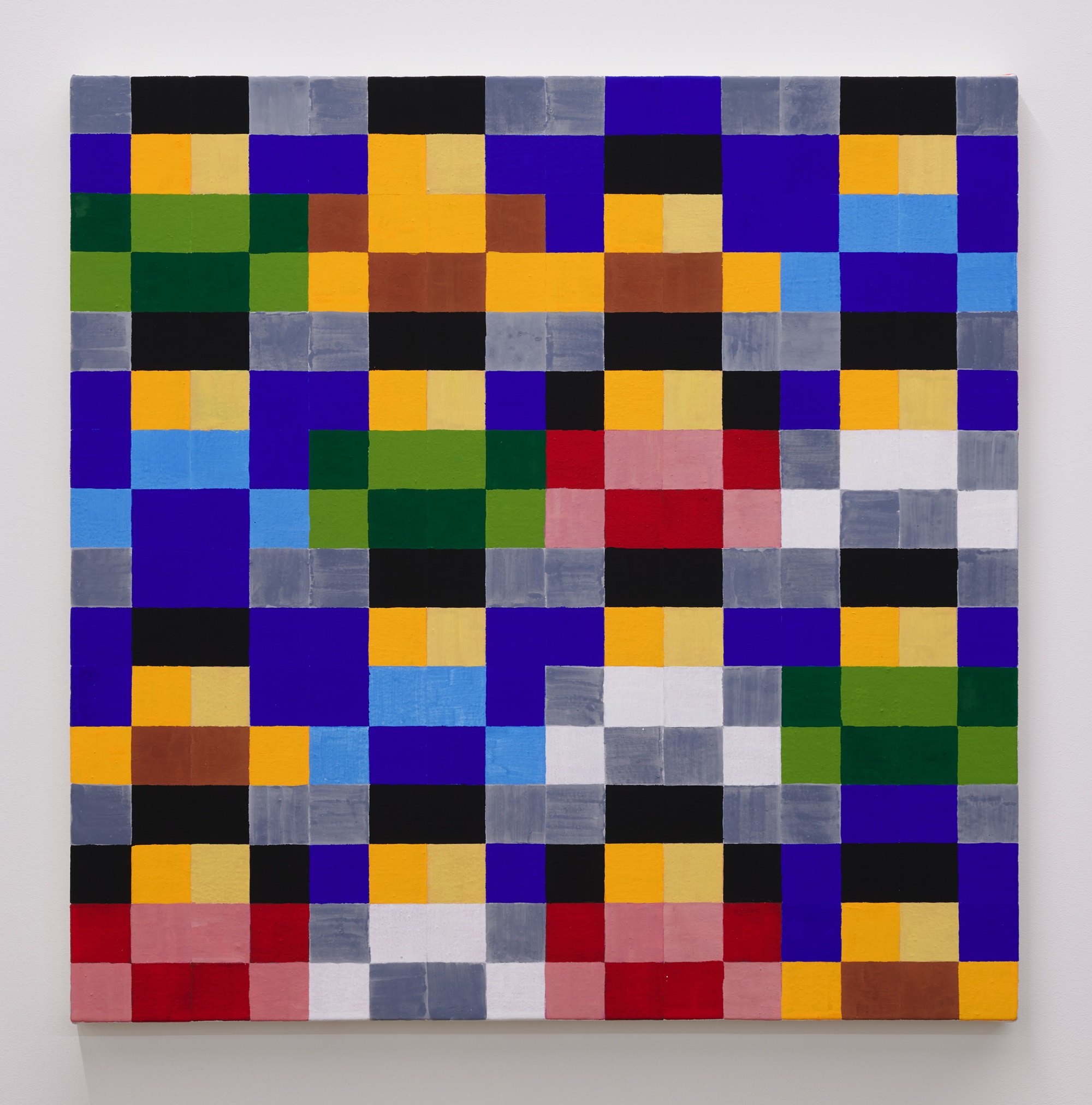
Auditorium
2023
Acrylic, pigment on cotton, panel
60 x 60 cm
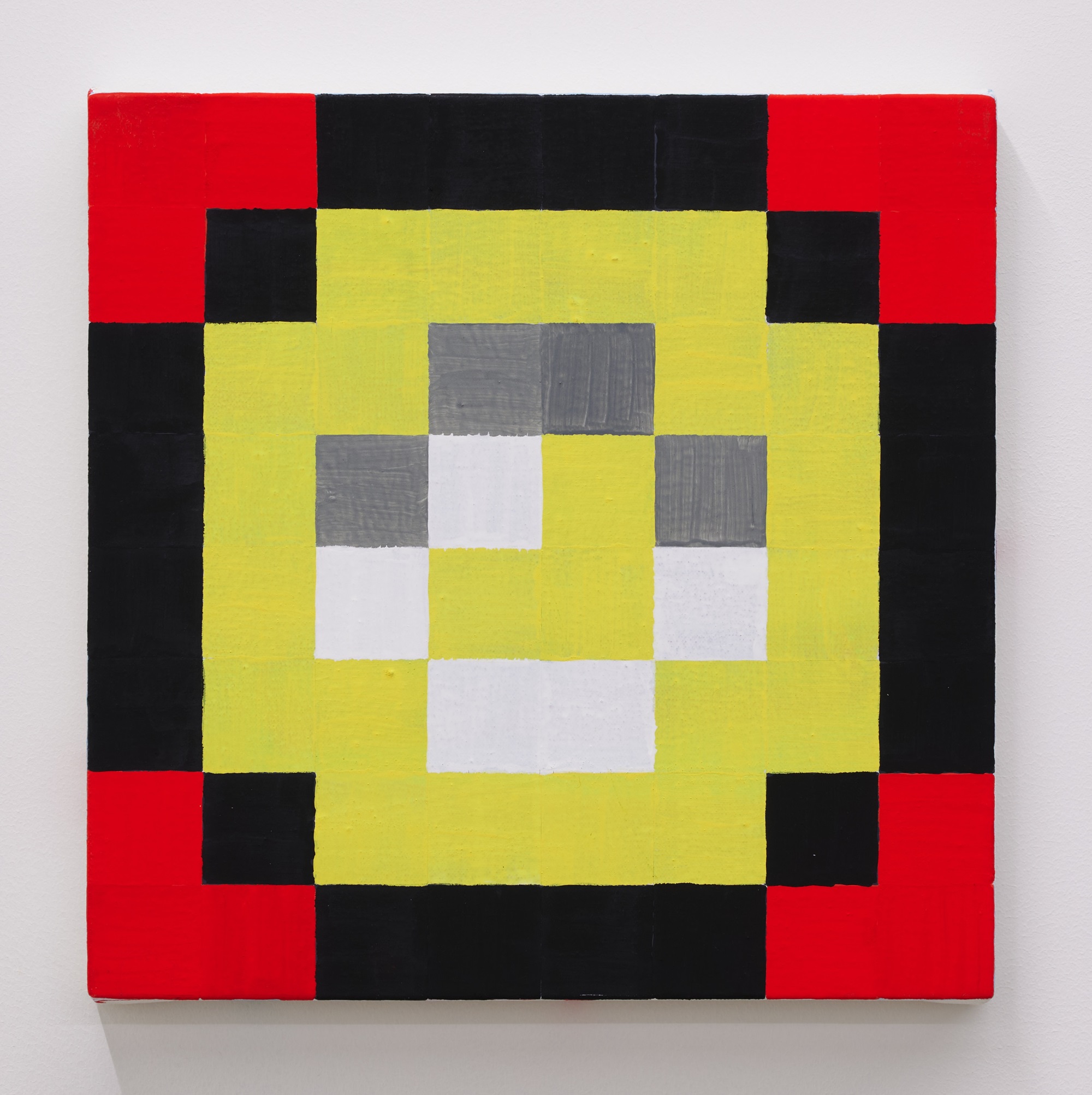
Coin
2023
Acrylic, pigment on cotton, panel
30 x 30 cm
Maki Fine Arts is pleased to present Light paintings, a solo show by Fuminao Suenaga, from February 17 through March 17, 2024. This will be Suenaga’s fifth solo show since his last show at Maki Fine Arts three and a half years ago.
—
A Blow of Lightness—About Fuminao Suenaga’s Light painting show
Keisuke Mori, Chiba City Museum of Art curator
Fuminao Suenaga’s paintings—hand-stretched square canvases divided lengthwise and crosswise into squares of 8, 16, and 32 grids which are then colored individually—are geometric and abstract, yet they convey a certain unique iconography. As referenced by the artist himself, Suenaga uses pixel art (dot paintings) and an iPad in his production process. His works showcased in Light paintings certainly have a correlation with technology and digital devices, even if their resolution may be perceived as “low.” And for visitors of a specific generation, the red vase-like container, the flowers, the crowd, and the explosions laid out in the gallery may evoke nostalgic scenes from computer games and ignite a certain sentimentality.
This new evolution using the iPad, for example, could be pointed out as related to the artist’s earlier series “Search Results,” his pre-pandemic paintings which depicted internet image search results of 20th century modern master artists. Motifs chosen by the artis previously included everyday items found around the artist, such as Post-its, levels, and protective storage boxes. In addition, objects existing in front of the viewer, such as picture frames were used as motifs. In other words, if we take into account the fact that the reproduction or representation of the real word has been done through the production of paintings, then we can understand that even the shimmering paint details evoking the physicality of the works in his newest exhibition can be seen as a pictorialization recognized by the artist in which a luminescent display is included.
Thus, Suenaga’s production philosophy—which is based on the proposition of pictorialization or materialization of real subjects—is a maneuver related to transformation including reduction, compression, substitution, and repetition exercised in the process of abstraction. And therefore, inevitably, it takes on the aspect of a “simulacre” which approximates reality.* Since proximity between the work and the system of painting has been indicated before, these works too, should be read as a mimicry of pixel art and as the artist’s intention of hacking the system itself. In other words, in contrast to its overt expression, only in the symbolic operation of various codes can Suenaga’s paintings secure their existence. So, his works—using a square as a unit and intricately composed with nonlinear combinations of 64, 256, and 1024 color grids—not surprisingly summon many paintings from the past. From Gerhard Richter’s “color chart” to Paul Klee’s grid-like abstract paintings which indirectly influenced the title of his new show, Suenaga’s works elicits the possibility of connection to paintings from the past.
When the visual similarities between each work are casually consumed as excess symbols, however, it may instead cause to decrease the high-order nature of the strategy latent in Suenaga’s paintings. Richter referenced Marcel Duchamp’s readymades in the “color chart” paintings he began creating in 1966 and was strongly influenced by pop art after moving to West Germany. Suenaga has created paintings intended to be practical objects while suppressing its subjects. Roy Lichtenstein’s influence during Suenaga’s earlier artist years and his approach to the medium of print and the continuity to his use of modern digital devices of recent years necessitates us to examine the fine-mesh details of the relationships between the individual paintings and the paintings etched into art history.
Since starting his path at the end of the 20th century, Suenaga’s artistic journey is about to reach a quarter of a century. His method of production—where multiple media firmly connect to daily life and those complex information environments evolve across the board to materialize the real world—is inseparable from society, and thus seems to have continued to bear the postmodern syndrome that was strongly prevalent at the time his activities began. The lightness indicated in the title of this show is a characteristic that runs through all of Suenaga’s works. The significance and potential of such strategies running parallel to the age of globalism—such as the homogenization or flattening of information and the “lightness” or “smallness” which could be considered the consequence the usurpation of mass—should be examined in more detail. Just as his collection of minimal squares in this exhibition are a maneuver making it possible to link them not only to the multitude of paintings by other artists but to his works from the past, the archival nature frequently seen in recent years must be a highly important aspect for the viewer to understand his works. At least to this writer, these “light paintings” ask us to decode the symbols, while, as previously pointed out regarding the manifestation as a flat surface, they paradoxically provide a complex richness that refuses easy consumption. These works are a ferocious blow or stab equivalent to the weight of the history of the era that has predestined the works. And perhaps, it is the artist’s own ferocity which is felt.
*Simulacre is a concept proposed by French philosopher Jen Baudrillard. It refers to a cultural phenomenon in which replicated symbols saturating the consumer society results in the real world itself becoming symbolized and the perception of conventional things beginning to transform.
—
I admit that I find myself searching for coolness in artillery vehicles when I see them shown during news of war conflicts, even though I understand that it is inappropriate. The realization that the reason for such a thought may have stemmed from my childhood experience with video games became the jumping off point for this show.
Some of the images I created were taken from games while others were digital drawings pixelated by using a pixel drawing app on my iPad. In addition, some images taken from games were altered.
Regardless of which image was used as the original, I copied them while I had my iPad at my side displaying a digital draft of the pixel art. Since the colors seen in the luminescence of the display and the colors seen as a mixture of pigments and mediums differ in the way it is received, there was a step taken in the process to make substitutions and to reconstruct the relationship. When paint is applied by hand and brush, the boundaries between colors are blurred and shifted, creating subtle overflows. Also, although the painting may appear to be painted flat, traces of the brush’s tremor and pressure remain on the surface. The combination of several factors results in a modestly abstract image that is almost faithful to the original painting, but in a different way.
Fuminao Suenaga
